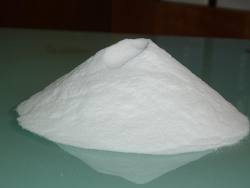Sodium sulfate drying agent is made from the sodium salt of sulfuric acid. In its anhydrous form, sodium sulfate drying agent is a white crystalline substance. sodium sulfate drying agent is also known as:
Sodium sulfate is most commonly used in the manufacturing of detergents and for making Kraft paper. More than 60% of the world’s sodium silicate comes from processing mirabilite, with the remainder coming from the production of hydrochloric acid and other chemical products.
One advantage that sodium sulfate drying agent has however is that it is less reactive than other types of drying agents, and its granular form makes it easy to extract from a solution. In fact, the liquid can be separated from a sodium sulfate drying agent without having to subject it to a filtration process, making it suitable for a wider variety of different applications.
Although it is tempting to simply keep adding sodium sulfate drying agent, it would be best to err on the side of caution and only add a little drying agent at a time. When you add too much drying agent to a solution, you may experience the loss of too much liquid later on in the process, since liquid will adhere to the surface of the sodium sulfate drying agent. By adding only a little amount at a time, you will be better able to determine just how much drying agent is sufficient.
Back to Top
- Glauber's salt
- sal mirabilis
Sodium sulfate as a drying agent
Sodium sulfate is one of the most commonly used drying agents at present. Although it is quite similar to magnesium sulfate in terms of water capacity, it tends to leave more water in the solution. Sodium sulfate also absorbs water at a much slower rate than magnesium sulfate.One advantage that sodium sulfate drying agent has however is that it is less reactive than other types of drying agents, and its granular form makes it easy to extract from a solution. In fact, the liquid can be separated from a sodium sulfate drying agent without having to subject it to a filtration process, making it suitable for a wider variety of different applications.
Precautions for using sodium sulfate
Like many other drying compounds available commercially, sodium sulfate drying agent is insoluble in liquid. This causes most people to add too much drying agent to a solution, since it can be difficult to determine how much drying agent is sufficient. In order to determine the proper amount of sodium sulfate drying agent to use, it would be best to follow these steps:- Begin with a conservative amount of drying agent
- Add a small amount to the tip of a spatula and mix it in thoroughly
- After the solution has settled, take note of its appearance. If the solution is transparent, there is probably enough sodium sulfate drying agent in it
- If the solution is a bit cloudy on the other hand, it may be necessary to add some more sodium sulfate drying agent
Although it is tempting to simply keep adding sodium sulfate drying agent, it would be best to err on the side of caution and only add a little drying agent at a time. When you add too much drying agent to a solution, you may experience the loss of too much liquid later on in the process, since liquid will adhere to the surface of the sodium sulfate drying agent. By adding only a little amount at a time, you will be better able to determine just how much drying agent is sufficient.
Back to Top
Drying Agent

Drying Agent Resources
Sponsored Links
